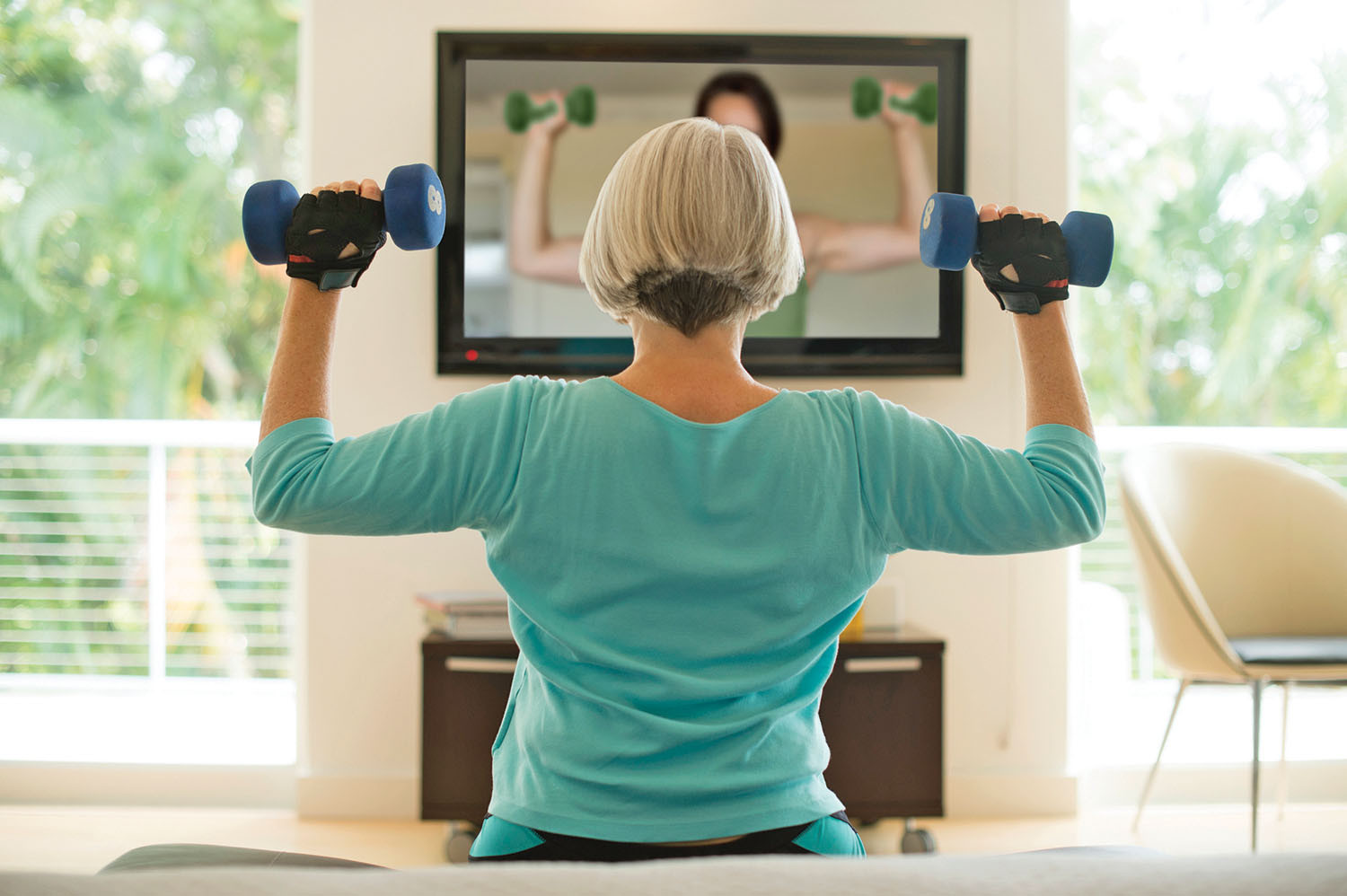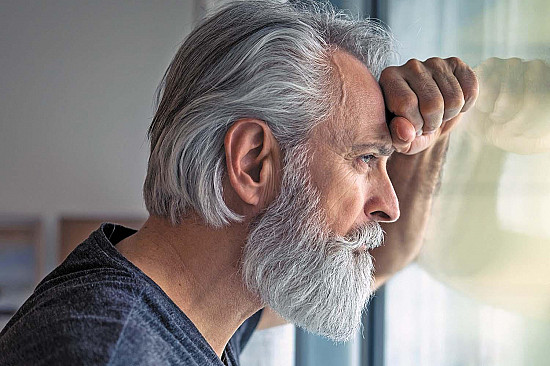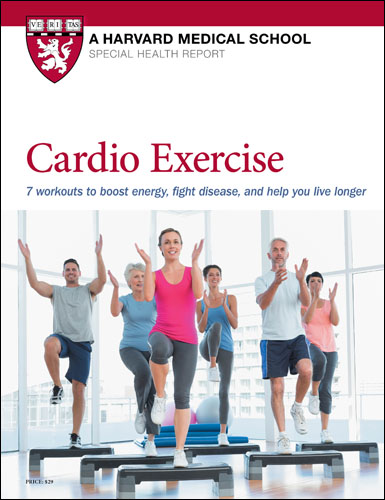Meeting your exercise goals online
The pandemic moved many workouts to virtual platforms. What lessons can we carry forward?
- Reviewed by Toni Golen, MD, Editor in Chief, Harvard Women's Health Watch; Editorial Advisory Board Member, Harvard Health Publishing; Contributor

If there's one thing the COVID-19 pandemic shut down, it's movement — both within our communities and around the world. But that impact swiftly extended to how we move our bodies, too, generating aftershocks that may forever change our relationship with exercise.
Most gyms and fitness studios shuttered their physical doors, at least temporarily, in response to the new global reality. But many rapidly launched or expanded virtual portals to exercise, ranging from Spin and Pilates to yoga, dance, and martial arts classes. A report by fitness research firm ClubIntel showed that three-quarters of newly closed brick-and-mortar gyms offered on-demand and livestream group workouts by early April 2020 — a number tripling since just two years earlier.
Meanwhile, vast numbers of people pivoted by tuning in to on-screen workouts, which spared them from COVID infection risks and offered a welcome dose of flexibility. A May 2020 survey of 700 people who used the MindBody health and wellness app showed that 80% had livestreamed workouts since the pandemic's start, compared with only 7% in 2019.
Now that lockdowns are (hopefully) in the rearview mirror, Harvard experts say the pandemic has transformed the ways we approach exercise — mostly for the better. And we can apply these hard-earned lessons going forward, regardless of how the pandemic continues to evolve.
"It emboldened us to try new forms of movement," says Dr. Lauren Elson, a physiatrist (a doctor who specializes in physical medicine and rehabilitation) at Harvard-affiliated Spaulding Rehabilitation Network. "I myself had never gone the extra mile to try other types because I already had a set routine. I think a lot of people had to become more flexible, because normal options were not there."
Physical and mental effects
It didn't take long after the advent of the global health crisis for public health organizations to recommend online exercise classes as a way to make up for lost activity. But it was vital to reinforce how strongly physical activity factored in to staying both physically and mentally healthy as the pandemic bore down. "It would have been really easy to completely turn off exercise, so finding resources and shifting gears really helped people weather the storm," Dr. Elson says.
Exercise-induced bursts of endorphins and other natural brain chemicals that boost mood were especially helpful during the fraught first months of the pandemic, says Dr. Beth Frates, director of lifestyle medicine and wellness in the Department of Surgery at Harvard's Massachusetts General Hospital.
"People could better manage the anxiety and stress of the daily news if they were exercising," Dr. Frates says. "Exercise was a great way to get away from the drama of the moment, and it still is." She notes that vigorous movement also beats back food cravings and promotes sleep.
Moreover, newfound forms of connected exercise — which included no-cost, socially distanced walks around the neighborhood — yielded untold mental health benefits.
"We crave human contact," Dr. Frates says. "Even if we didn't talk to people in our virtual classes, just seeing them doing the same moves helped us feel connected. We were joined in the journey of the class and meeting the challenges of the moment, whether they were planks or Warrior poses."
Our ability to exercise in fundamentally fulfilling ways also heightened our sense of control during an otherwise out-of-control era, says Dr. Pamela Peck, clinical director of psychiatry at Harvard-affiliated Beth Israel Deaconess Medical Center.
"It's been a little bit of making lemonade out of lemons. You could show up for your 6 a.m. class, even when you didn't have control over the numbers of COVID cases or how long this was all going to last," Dr. Peck says.
Wide-ranging benefits
Online workouts do present a few disadvantages, notably a lack of personalized attention from instructors who can wave to the masses but not much else. "Actions that encourage us, like pats on the back and high-fives, are all bigger and stronger in person than on-screen," Dr. Frates says.
Still, virtual sessions — which are certain to blend with in-person options beyond the pandemic — have much to offer. Harvard experts point to these additional benefits:
Variety. It's tough to claim boredom with your exercise routine when so many workout choices are available at the touch of a button. Customized "playlists" of classes allow you to toggle between, say, high-energy aerobics and core-strengthening Pilates, accomplishing specific fitness goals.
Collective competition. Some of us have banded together with friends to join the same online workout classes. "A lot of people benefit from the competitiveness that results," Dr. Elson says.
Privacy. Some people don't like exercising around others in person or feel vulnerable in that setting. "For them, virtual classes afford connection at a distance," Dr. Peck says.
Shared experience. Personal crises — death, divorce, unemployment — can make us feel alone, but the pandemic is something we've endured together, facing the same challenges and hurdles. "Being part of something larger than yourself can help you feel grounded and less alone," Dr. Peck says.
Perhaps the biggest upside to our new, hybrid approach to exercise: many of us are now doing more of it. "Some have slipped back into their old habits, but a lot of us have developed healthy new patterns with a new mix of options," Dr. Elson says.
"There's no commute time, no paying for parking, and no traffic" with virtual sessions, Dr. Frates says. "Some people have likely grown accustomed to their 7 a.m. online Zumba class and don't want to stop — and there's no reason to. If the ease of the class helps people stay on track, then it's worth continuing."
Image: © Rick Gomez/Getty Images
About the Author

Maureen Salamon, Executive Editor, Harvard Women's Health Watch
About the Reviewer

Toni Golen, MD, Editor in Chief, Harvard Women's Health Watch; Editorial Advisory Board Member, Harvard Health Publishing; Contributor
Disclaimer:
As a service to our readers, Harvard Health Publishing provides access to our library of archived content. Please note the date of last review or update on all articles.
No content on this site, regardless of date, should ever be used as a substitute for direct medical advice from your doctor or other qualified clinician.
















